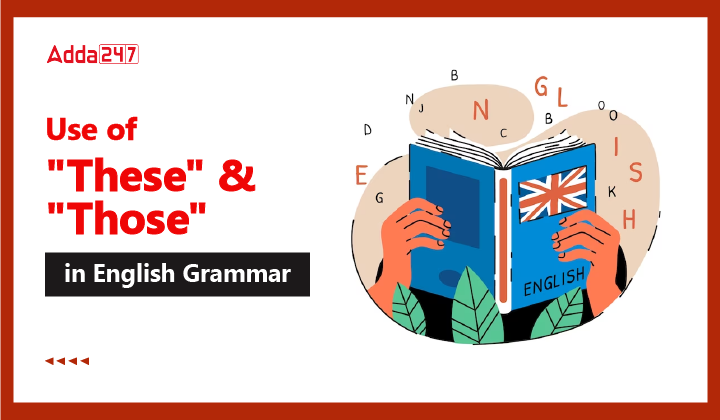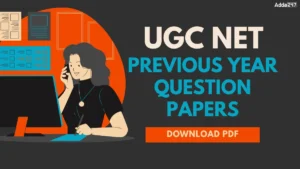Table of Contents
If students are not taught how to use words in sentences properly, the English language may become daunting to them. It becomes simpler for everyone to comprehend after they are taught how to use the words “these” and “those” or what they need to remember when utilizing these words. All of the information a learner needs to know about how to use “these” and “those” correctly is covered in this article.
An understanding of the same will help candidates have a good grasp over the English language and therefore, crack government exams easily.
Definition of Pronoun
Words that are employed in sentences in place of nouns are called pronouns. They refer to a noun that was used previously in the sentence, and they have to match the noun in terms of number, gender, and point of view. Pronouns are employed to improve the clarity, flow, and reduced awkwardness of our statements.
These & Those – Commonly Used Pronouns
Demonstrative pronouns like “these” and “those” are one of the most taught grammatical concepts in primary school. This type of subject is covered in primary school to teach kids how to properly employ them in sentences. What is a simple approach to educate kids how to use these two terms? Do they need to be aware of any rules before using the word? In this article, we’ll talk about each of these ideas.
These & Those – Meanings
The pronoun “these” is used when a speaker wants to indicate that a neighbouring noun is multiple in nature, as in “These toys are mine.” In this context, the pronoun “these” is used to denote the speaker’s own toys that are in close proximity to him.
“Those” is used to denote a plural noun that is far away from the speaker, as in “Those huts are far away in the forest.” ‘Those’ in this sentence refers to the far-off huts that the speaker can see. Once students understand this, using these pronouns in sentences will be less difficult for them.
These & Those – Differences
‘These’ and ‘those’ can both be used as pronouns, but they refer to items that are farther away, as the tabular chart demonstrates. Students will better understand the words’ proper usage due to their in-depth definitions. The same has been illustrated below.
| Difference Between “These” and “Those” | ||
| Differences | These | Those |
| Definition | The word ‘these’ is used to denote more than one object that is closer to the speaker. | The word ‘those’ is used to denote more than one object that is far from the speaker. |
| Physical Distance | Used as a pronoun when referring to something closer to the speaker physically
Example: “These books on the table are mine.” (The books are close to the speaker.) |
Used as a pronoun when referring to something is farther away to the speaker Physically
Example: “Those books on the shelf are yours.” (The books are farther away from the speaker.) |
| Time/Context Difference | Used to refer a concept or thing discussed just now
Example: “These ideas make a lot of sense.” (Referring to ideas that were just mentioned or discussed.) |
Used to refer a concept or thing discussed earlier or sometime back
Example: “Those concepts are more difficult to understand.” (Referring to concepts that were mentioned earlier or are being discussed in a more distant context.) |
These & Those – Examples
Let’s go through the below-tabulated examples of ‘these’ and ‘those’ to gain a better understanding of the concepts clearly.
| Examples of “These” and “Those” | |||
| Purpose | Example | Explanation | |
| These | Those | ||
| Physical Distance | These apples in the basket are ripe and ready to eat. | Those apples on the tree need more time to grow. | “These” refers to apples that are physically closer to the speaker (in the basket), while “those” refers to apples that are farther away (on the tree). |
| Pointing Out | These shoes are the ones I want to buy. | Can you pass me those shoes near the door? | “These” highlights specific shoes the speaker is interested in (ones they want to buy), while “those” points to shoes near the door, directing attention to a specific location. |
| Conceptual Distance | These principles are fundamental to understanding the concept. | I’m still trying to grasp those advanced theories in the textbook. | “These” refers to principles closely related to the current topic, while “those” refers to theories that are more distant or different from the current focus. |
| Immediate vs. Distant | These emails require urgent attention. | I’ll get to those emails later in the day. | “These” refers to emails that need immediate handling, while “those” implies emails that can be addressed at a later time. |
| Multiple Items | These pens on my desk need to be replaced. | Please hand me those pens from the table across the room. | “These” pens are nearby on the desk, while “those” pens are at a greater distance, requiring movement across the room. |
| Comparative Usage | These cupcakes are delicious, but those cakes over there look even more tempting. | “These” emphasizes the quality of the nearby cupcakes, while “those” highlights the appeal of cakes that are farther away. | |
| Personal Possession | These keys are mine, and those keys are yours. | “These” keys belong to the speaker, while “those” keys belong to someone else. | |
| Present vs. Past | These days, technology is advancing rapidly. | Back in those days, things were much simpler. | “These” days refer to the present time, while “those” days refer to a more distant past. |
| Inclusion vs. Exclusion | These cookies are for everyone to share. | I’ll save those special cookies for a later occasion. | “These” cookies are inclusive, available for sharing, while “those” cookies are excluded from immediate sharing due to their special nature. |
Conclusion
Overall, the pronouns “these” and “those” are both employed to refer to plural items that are located at particular distances from the speaker. These pronouns cannot be switched out or used interchangeably. One must consider the objects’ distance from the speaker when using these pronouns. Adda247 offers several articles on numerous ‘Use of’ terms that students struggle to understand.



 Daman and Diu Primary Teacher Recruitmen...
Daman and Diu Primary Teacher Recruitmen...
 UGC NET Previous Year Question Papers wi...
UGC NET Previous Year Question Papers wi...
 MPPSC Assistant Professor Syllabus 2026,...
MPPSC Assistant Professor Syllabus 2026,...












